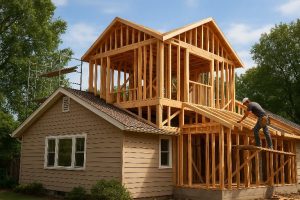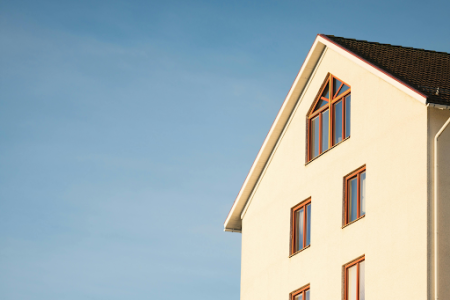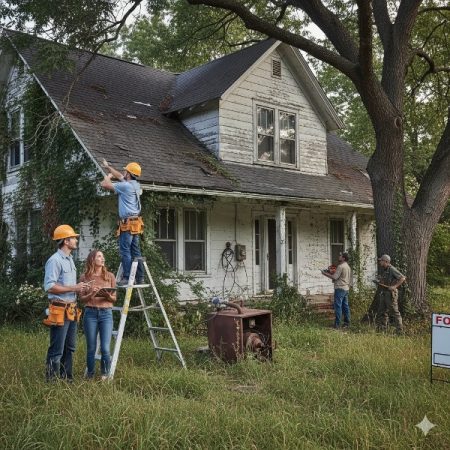The Rise of Sustainable Building Practices
Sustainability is no longer just a buzzword in the construction industry; it has become an essential aspect of modern architecture and construction practices. Additionally, buildings designed with sustainability in mind often provide healthier environments for occupants, increasing productivity and general well-being. Furthermore, government incentives for green buildings can lead to substantial tax breaks and funding opportunities, making them financially appealing.
Technological Advancements Driving the Industry
The commercial construction industry is undergoing a technological revolution. Incorporating eco-friendly practices and materials into commercial construction projects benefits the environment, reduces operational costs, and enhances market value. Introducing cutting-edge technologies such as BIM (Building Information Modeling), drones, and AI fundamentally transforms how projects are designed, managed, and executed. These technologies bring unprecedented levels of accuracy, eliminate costly errors, and facilitate seamless project management. For example, BIM allows architects, engineers, and contractors to collaboratively create a digital model of the building, ensuring that every detail is meticulously planned and executed. Additionally, drones offer an aerial perspective invaluable for surveying and monitoring large construction sites. Forbes highlights that AI enables predictive analysis, granting project managers the ability to foresee potential issues and make informed decisions, thus optimizing the construction process.
BIM (Building Information Modeling)
BIM has become an essential tool in the construction sector, enabling the digital depiction of both the physical and operational aspects of a building. This technology facilitates better stakeholder collaboration, improved workflows, and more efficient project management, particularly in commercial remodeling projects. By using BIM, architects and engineers can detect and resolve potential issues before construction begins, significantly reducing the likelihood of costly errors or delays. Moreover, BIM can be used for lifecycle management, ensuring that the building remains operationally efficient throughout its lifespan. The collaborative aspect of BIM promotes transparency and accountability, leading to commercial remodeling projects that are completed on time and within budget.
The Flexibility of Modern Design
Modern needs have shifted drastically, requiring commercial spaces to adapt quickly to various functions. One notable trend in commercial construction is the demand for flexible and adaptable spaces designed to accommodate future needs without extensive renovations. Modern office buildings and commercial spaces are being designed to easily reconfigure to meet changing requirements, driven by the constant evolution of work and business environments. This trend has paved the way for innovations in modular construction and multi-use buildings. Flexible design principles extend the lifecycle of commercial properties and attract a broader range of tenants who appreciate spaces that can evolve with their needs.
Modular Construction
Modular construction is becoming more popular because of its effectiveness and eco-friendliness. This method involves creating sections of a building off-site in a controlled environment, which are then transported and assembled on the construction site. Modular construction significantly reduces construction time, minimizes on-site waste, and improves quality control. The off-site manufacturing process allows for better precision and minimizes the impact of weather delays. Furthermore, modular buildings can be easily expanded or modified, providing the flexibility to meet changing needs. Reports indicate that green buildings can reduce energy consumption by up to 30%, a significant figure considering the current climate crisis and rising energy costs. This approach aligns perfectly with the growing demand for adaptable commercial spaces and offers a practical solution for urban development.
The Advent of Smart Buildings
The concept of intelligent buildings is reshaping the commercial construction landscape. Smart buildings have advanced technologies that enhance energy efficiency, security, and occupant comfort. These structures use IoT gadgets and automation systems to oversee and regulate different factors like lighting, HVAC, and security.
Understanding why professionals are important in this process is key — experienced experts ensure these complex systems are designed, installed, and maintained correctly to maximize benefits and prevent costly errors. Implementing intelligent building technologies creates a more responsive, adaptable, and efficient structure. By analyzing data from IoT devices, building managers can optimize energy usage, predict maintenance needs, and improve overall operational efficiency. As technology continues to evolve, the potential for intelligent buildings to revolutionize the commercial construction industry becomes increasingly evident.
IoT Integration
The integration of IoT devices in buildings has revolutionized facility management. IoT technology enables the immediate monitoring and management of multiple systems, guaranteeing peak performance and effectiveness. One example is the ability of smart thermostats to modify temperature settings automatically by considering occupancy and weather conditions, leading to a decrease in energy usage. Sophisticated security systems with IoT sensors can identify and address possible dangers, improving the safety of both the building and the people inside. The information gathered from IoT devices offers valuable knowledge that can enhance building operations, cut costs, and enhance the comfort of occupants. The widespread adoption of IoT technology is set to transform commercial construction and redefine building management standards.
Health and Wellness in Commercial Spaces
Recently, a growing focus has been on incorporating health and wellness features into commercial buildings. These features aim to create environments that promote physical and mental well-being for occupants. Natural lighting, improved air quality, and ergonomic designs are just a few ways builders are enhancing the health and wellness of those who work and visit these spaces. For example, using large windows and glass walls allows for greater exposure to natural light, improving mood and productivity. Incorporating green areas and indoor foliage can improve air quality and promote a more enjoyable work atmosphere. This trend improves worker productivity and attracts tenants who value healthier, more sustainable environments.
Natural Lighting
The use of natural lighting in commercial spaces provides numerous benefits. It decreases the necessity of using artificial lighting, reducing energy expenses and reducing the building’s carbon impact. Being in natural light has also been associated with enhanced mood, higher productivity, and improved overall health. By designing spaces that maximize natural light, architects and builders can create more inviting and energizing environments for occupants. Furthermore, the presence of natural light can help create a stronger bond with the outside world, improving the overall visual attractiveness of the area. The integration of natural lighting is a crucial aspect of sustainable design and contributes to the well-being of building occupants.
Resilient and Durable Construction
Due to the rise in extreme weather occurrences, there is a greater emphasis on constructing resilient and sturdy buildings. Commercial buildings must withstand natural disasters to ensure the safety of occupants and protect investments. Materials and construction methods that offer enhanced durability are being prioritized in modern construction projects. Advancements in materials technology have resulted in the creation of items capable of withstanding harsh temperatures, strong winds, and flooding. By using these resilient materials, builders can create structures better equipped to handle the challenges posed by climate change and other environmental factors. This focus on resilience enhances commercial properties’ longevity and increases their value and appeal to potential tenants.
Weather-Resistant Materials
Using materials resistant to harsh weather conditions is crucial for the durability and resilience of commercial buildings. Advanced materials such as high-performance concrete, weather-resistant coatings, and impact-resistant windows can significantly improve a building’s ability to withstand extreme weather events. These materials are designed to provide superior protection against environmental stressors, ensuring the structural integrity of the building over time. By incorporating weather-resistant materials into construction projects, builders can create safer, more durable buildings that stand the test of time. This approach is critical in regions prone to natural disasters and extreme weather conditions.
Collaboration and Integrated Project Delivery
Integrated Project Delivery (IPD) and collaborative approaches are changing the dynamics of commercial construction. These methods emphasize early and continuous involvement of all stakeholders, fostering better communication, reducing conflicts, and streamlining the construction process. IPD promotes a collaborative environment where architects, engineers, contractors, and clients work together from the project’s inception to completion. This approach helps identify and address potential issues early, ensuring the project stays on track and within budget. IPD helps deliver projects that meet or exceed client expectations by involving all stakeholders early in the project. This collaborative approach enhances project outcomes and builds stronger relationships among project participants.
Benefits of IPD
IPD offers numerous benefits, including improved project outcomes, reduced costs, and enhanced team collaboration. By aligning the interests of all parties involved, IPD minimizes risks and maximizes efficiency throughout the construction process. This integrated approach fosters a culture of transparency and accountability, where each team member is committed to the project’s success. Additionally, IPD facilitates better decision-making, as all stakeholders can access relevant information and contribute their expertise. The result is a more efficient and effective construction process that delivers high-quality outcomes. As the commercial construction industry evolves, adopting IPD and collaborative approaches is expected to become increasingly widespread.
Conclusion
The commercial construction sector is experiencing major changes due to sustainability, technology, and changing design requirements. By keeping up with these trends, stakeholders can make sure that their projects are effective, flexible, and prepared for the future. The integration of sustainable practices, advanced technologies, flexible design principles, and collaborative approaches will continue to shape the future of commercial construction. As the industry evolves, it is essential to embrace these innovations and trends to create buildings that are functional, aesthetically pleasing, resilient, and environmentally responsible. In this way, the commercial construction sector can help create a more sustainable and successful future.






